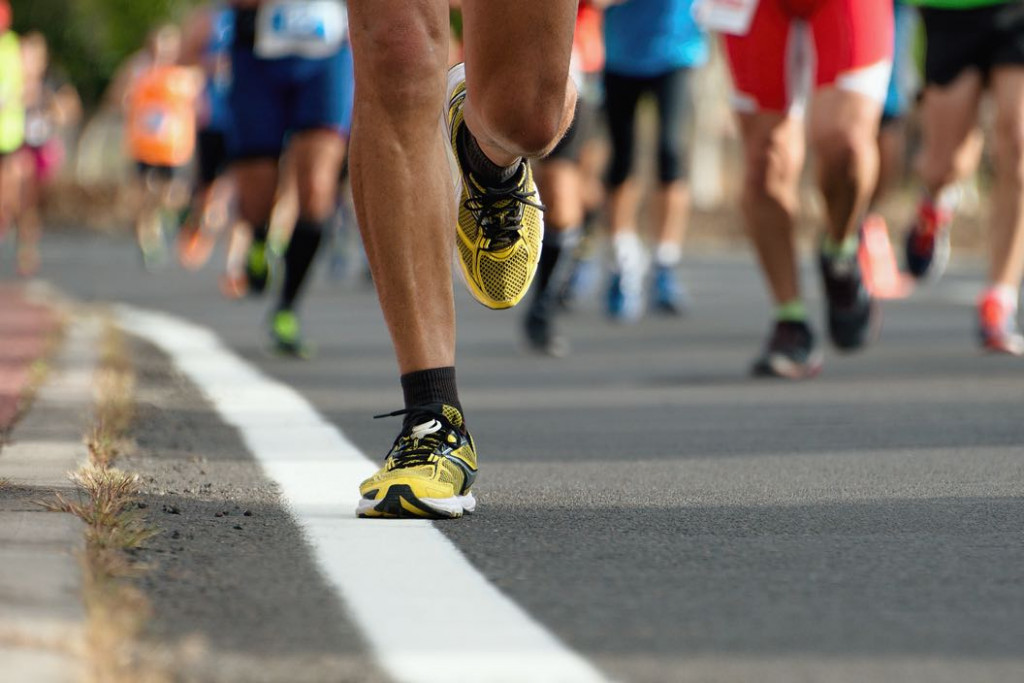How to Run Broad Street Faster This Year Than You Ever Have Before
Make this year the year you finally PR on Broad Street.

Photograph via iStock/Pavel1964
Let’s face it, while hopefully we all run because we enjoy it and it feels good, we also run to get faster. And while it’s perfectly fine to have your only goal be to cross the Broad Street Run finish line in one piece, for those who have run it year after year, we know what you’re thinking: Will this be the year I PR?
But becoming a faster runner doesn’t come without effort. To fully understand how to improve at running, it helps to understand a little about the science behind athletic improvement. At a very, very basic level, every time you place your body to a point of stress beyond it’s normal routine — like running harder or longer then you have before — your body goes into a state of shock. Stress hormones are released as a warning sign. Your body then signals indicating, “Hey we need to do something to prepare incase this happens again.”
Now, only during a period of rest (the key here is REST!) after the initial stress the body will rebuild itself to better handle for next time. Repeat this stress, rest, and rebuild process over and over again and that’s how fitness improves. Again, very basic — but that’s the gist of it.
Now that we understand the key to improvement is stressing your body just beyond it’s comfort level and then allowing itself to rebuild, we can apply that to your race training. To start, think back on what you did to train for last year’s Broad Street Run. Pull up your GPS watch stats, Strava account, or running log from last year. How many miles did you run each month leading up to Broad Street? How many long runs did you do, and how far did you go? How fast did you complete your long runs?
Armed with all this data from last year’s Broad Street training, you can now plan out a progression to do a little more then you did last year, assuming you’re in similar or better fitness then you where last year. Important note: If you’re training properly with this stress-and-rest cycle, your average running pace across all runs is less important then your pace on the key workouts — your speed sessions and long runs.
In my experience as a coach, this planning step is where most runners go wrong. The automatic default for most people is to just try to do each training run faster, to think along the lines of “if I ran 6 miles at X pace last year, then I should run 6 miles faster this year.” While there is some truth to that, pace is a reflection of your current fitness level. Trying to hammer out each run at a faster and faster pace will only leave you exhausted.
It may seem counter intuitive, but forget about pace for a second. If you want to run fast, think about increasing the volume of your runs, not the pace.
Here’s I mean: Look at your key sessions each week, mainly your speed session (tempo, hills, fartlek, etc) and the almighty long run. Make it a goal to run a little further — not faster — than you did last year. If you topped out your training at ten miles last year, try to do 12 miles this year. Alternatively, if you did one ten miler last year, try to do three ten milers leading up to race day.
As for your speed sessions, try doing more reps or extending the distance of each rep. Instead of running 10 x 400 at a 5K pace week, try 12 or 14 x 400 at the same pace, or try for 8 or 10 x 600. Keep your typical speed work pace, but run farther.
Make sense? Not faster, but more. Trust me, if you concentrate on upping the volume incrementally with adequate recovery between each hard session, your pace will naturally start to improve, and you’ll in a good spot to run Broad Street faster than you ever have before.
Cory Smith is a Philadelphia based running coach; founder of Run Your Personal Best, an online running-coaching business and former head cross country coach at Penn State Brandywine. He is a USA Track and Field-certified Endurance Level 2 coach and a 4:03 miler. As a student athlete at Villanova, Cory was a multiple-time NCAA Division One Regional qualifier and two-time National Championship qualifier. Contact Cory at cory@runyourpersonalbest.com. Read all of Cory’s posts for Be Well Philly here.
Like what you’re reading? Stay in touch with Be Well Philly—here’s how:
- Like Be Well Philly on Facebook
- Follow Be Well Philly on Instagram
- Get the Be Well Philly Newsletter
- Follow Be Well Philly on Twitter


